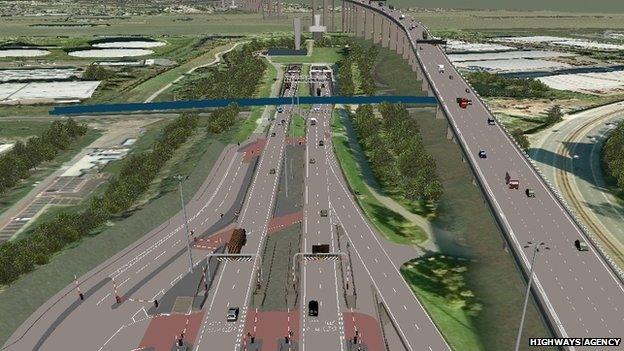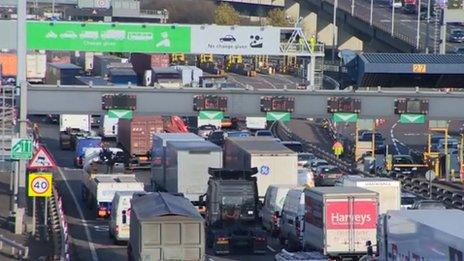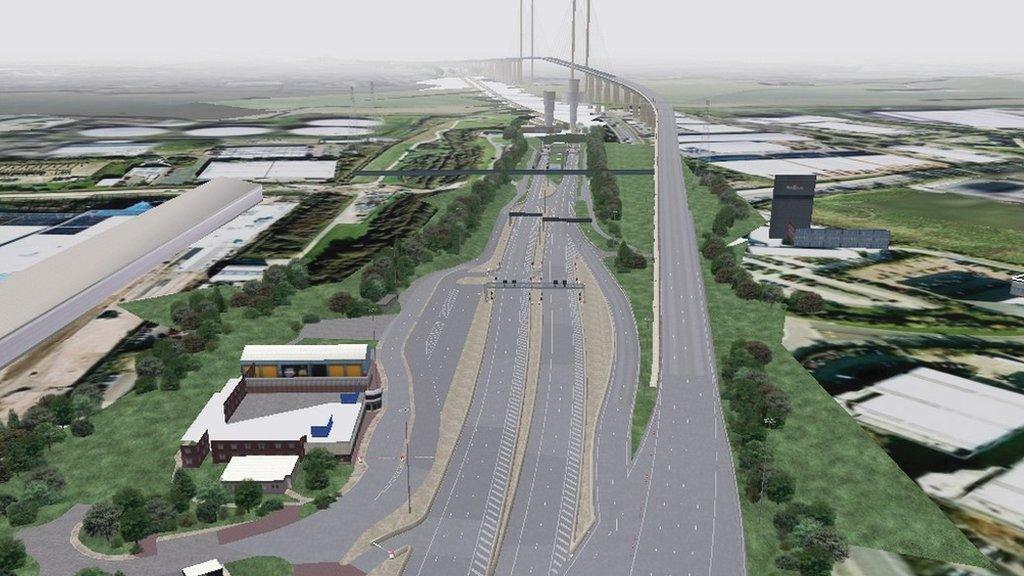Dartford Crossing payment system changes
- Published

Four expressways in each direction will take the place of the toll booths at the Dartford Crossing
A new payment system has been introduced at the crossing between Kent and Essex.
The payment system, external at the Dartford Crossing came into force at 06:00 GMT, replacing the toll booths on the Kent side of the crossing.
The current 27-lane system will be replaced by four expressways in each direction and lanes to help turn away vehicles unsuitable for the tunnels.
Charges have increased overnight for cars from £2 to £2.50.
The charge for goods two-axle heavy good vehicles including vans has risen by 50p to £3. Multi-axle good vehicles will now be charged £6 - a rise of £1.
Drivers using a pre-paid account will save up to one third.
Motorists will need to pay for each crossing, external in advance, or by midnight the following day.
'Not long-term answer'
Motorists have been warned of delays and diversions while work is done to remove the toll booths and barriers.
Nigel Gray, project leader of the free-flow system, said: "Although our scheme will make significant improvements, in terms of congestion, it's not the long term answer.
"We still need to manage demand while we can use the money that we collect here to help build another crossing in the lower Thames region which is what we're planning at the moment."
The Dartford Crossing consists of the Queen Elizabeth II Bridge for traffic heading south from Essex to Kent, and two tunnels for motorists going north between Kent and Essex.
The new Dart Charge will see barriers removed and motorists charged through the use of number plate recognition cameras.
Drivers will be able to pay online, by text message or by phone.
Temporary road layout
The Highways Agency has details of how to pay on its website, external.
The QEII bridge will be closed, external from 23:30 GMT until 05:30 on Monday. Traffic will be diverted off the M25 at junction 30 on to the A13 and through the Blackwall Tunnel, before returning to the M25 at junction two on the A2.
From 05:30 on Monday there will be a temporary road layout at the toll booths.
The barriers will not be removed immediately. Instead they will be raised and lowered for each vehicle as way of managing traffic flow at the crossing.
Work is expected to be completed by Spring 2015 on the new road layout.
An average of more than 140,000 vehicles use the River Thames crossing every day.
- Published29 November 2014

- Published18 November 2014

- Published13 October 2014

- Published20 September 2014

- Published22 April 2014

- Published7 June 2014
